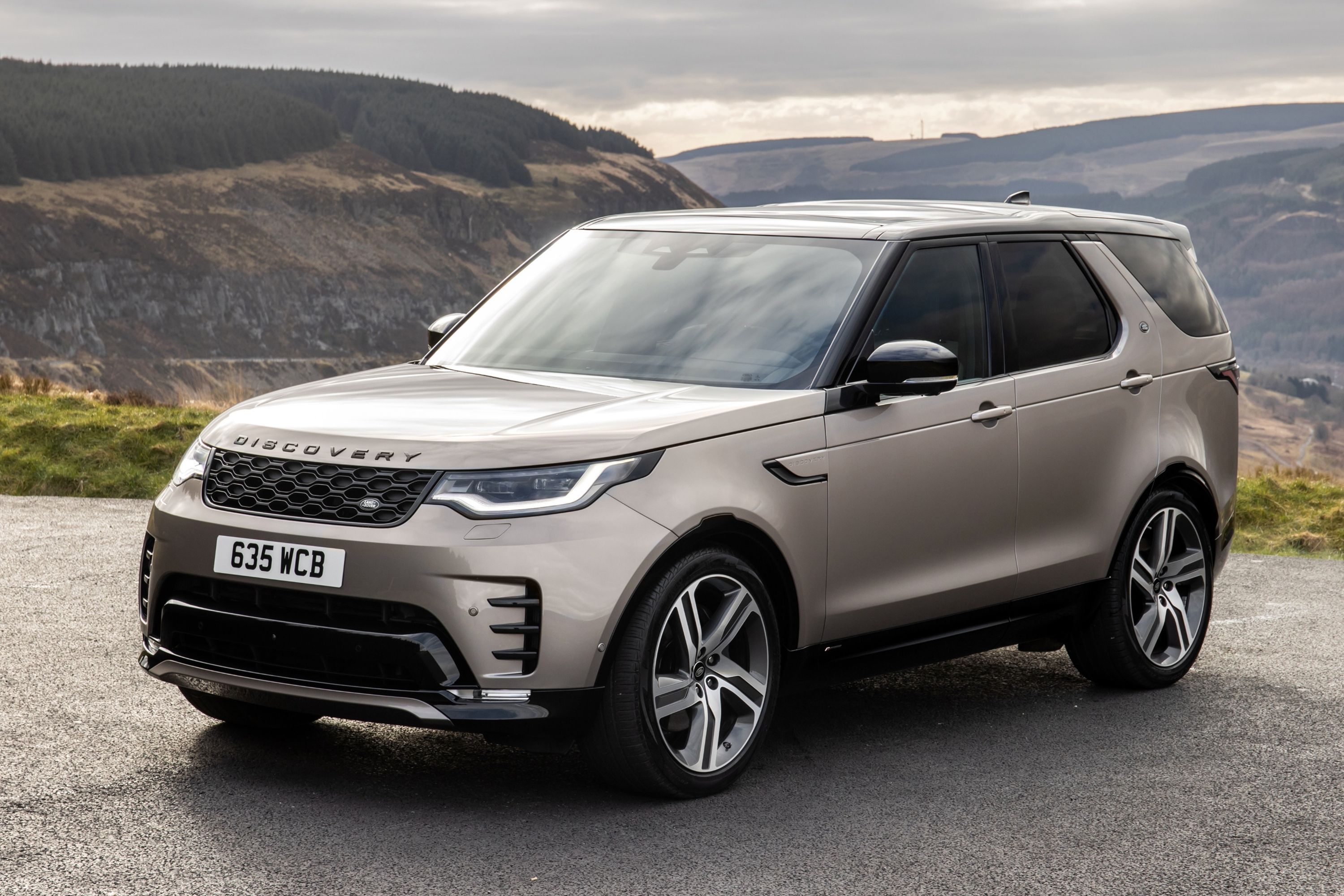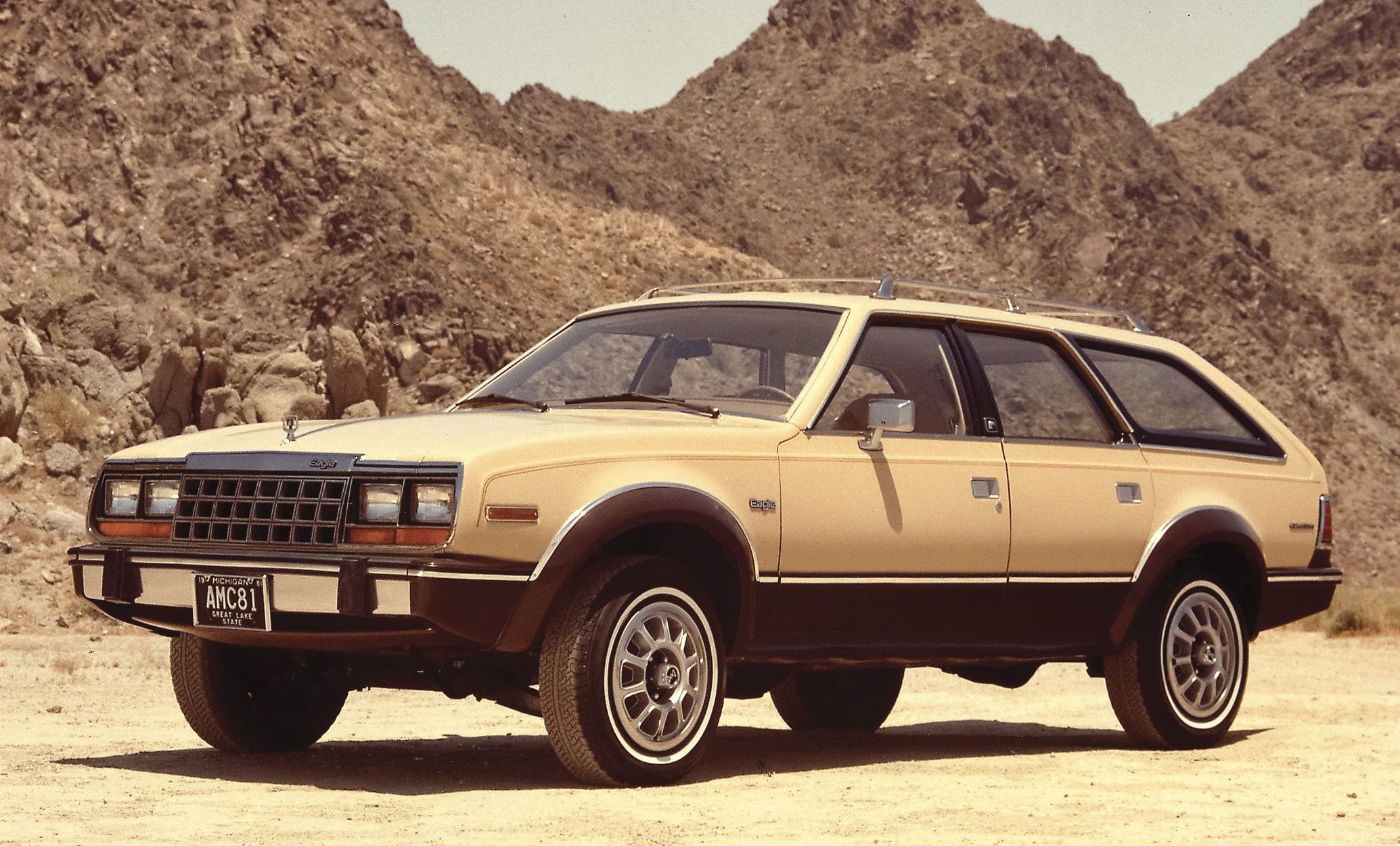
The concept of the crossover is not a new one, but the marketing term that gave birth to the segment is. The SUV came into its own in the late 1980s and early 1990s as, mostly, a more comfortable truck. SUVs were, and still are, brawny and capable in all conditions, and utility was the keyword in the Sport Utility Vehicle. Then, in the mid-1990s, the crossover as we know it now showed up.
There's no official definition for a crossover, but we've mostly come to know it as an SUV style vehicle based around a car's chassis. A crossover is a car that typically has the everyday practicality of an SUV but sacrifices off-road and towing ability, to varying degrees, to gain the road manners of a traditional on-road sedan or hatchback. In the mid-1990s, automakers started building crossovers to be family-friendly and with enough ride height to take on rough surfaces. Most crossovers also either came standard with all-wheel-drive or as an option. However, the first genuine attempt a crossover showed up in the US in 1980, and that's where we'll start.
AMC Eagle (1980-1982)
The late 1970s and early 1980s were not a good time for the American car industry. It was the Malaise era, and things were not pretty. The Eagle certainly wasn't, but look past the ugliness and you can see why it was a significant car. It's a station wagon, but its suspension has been jacked up to give extra ride height, and it came with permanent all-wheel-drive. Subaru had introduced the four-wheel-drive Leone station wagon in 1972, but it wasn't raised, so we're hard-pressed to call that the first crossover.
The AMC Eagle didn't embarrass itself off-road, but its all-weather abilities and fuel economy did it proud. The AMC Eagle was ahead of its time, and a harbinger of what was to come.
Jeep Cherokee XJ (1983-2001)
If you want the missing link between the SUV and the crossover, it's the Jeep Cherokee XJ. The Cherokee XJ is a point of divergence, as its also the precursor to the SUV before the term became widely used. Jeep marketed it as a Sportwagon and sparked the trend of suburbanites switching from traditional station wagons into something tall and rugged. The reason we call it the precursor to the crossover is because, while the compact class Cherokee XJ retained its off-road prowess, it also rode on a unibody chassis and was a lot smaller than the full-size Cherokee it replaced.
The importance of the Cherokee XJ is often overlooked. Not only was it better off-road than the Cherokee SJ it replaced, but it was 1,200 lbs lighter due to its unibody frame and four inches lower, but with better ground clearance. It was also 31 inches shorter and six inches narrower, yet had only ten percent less volume inside.
Toyota RAV4 (1994–Present)
The term crossover didn't come into being until the late 1990s, after the release of the Toyota RAV4. The definition has never been pinned down officially, but if a rugged vehicle built on a car platform with all-wheel-drive available is your definition, then the Toyota RAV4 was both the first real crossover. It was also the first subcompact crossover, and, for the trifecta, in 1997, the RAV4 was also the first electric crossover to market.
The first generation was built on a new platform but used elements from Toyota's Carina and Corolla models. RAV4 stands for 'Recreational Activity Vehicle 4-wheel drive,' but the first generation was available in front-wheel-drive in some markets. It sat nine inches higher than a Camry, about 1.5 inches lower than a Ford Explorer, and used a sophisticated rear suspension setup that acts like the rear trailing arm system most often used on trucks and SUVs.
Subaru Forester (1997–Present)
Japanese manufacturers were ahead of America with the crossover, as US brands continued to concentrate on light truck-based SUVs until the mid-2000s. Japanese automakers pushed the crossover as an alternative to station wagons, which had fallen out of fashion in the 1990s. Honda launched the CR-V in 1997, and in the same year, Subaru launched the Subaru Forester. It was based on the Impreza platform, but it rode higher, had a higher seating position, a boxy wagon style body, and the all-wheel-drive system was powered by the 2.5-liter boxer engine from the Subaru Outback. Subaru marketed the first generation Outback as being "SUV tough, Car Easy," and, in the US, its low center of gravity met the standards not to require the "risk of rollover" warning label on the driver's sun visor.
Honda HR-V (1998–2006, 2014–Present)
The first generation HR-V didn't come to America, but it was the start of the rise of the subcompact crossover. It competed with the short-wheelbase version of Toyota's RAV4, even in its five-door layout. All-wheel-drive was optional, but ticking that box was the only way to get the VTEC engine option. The real-time 4WD system was sophisticated and activated hydraulically when the front wheels lost traction. The second generation was introduced to the world at the 2014 New York International Auto Show and shared its platform with the Honda Fit. It's now a 5-door subcompact SUV with optional all-wheel drive.
Lexus RX (1998–present)
The first luxury crossover showed itself in 1998. The Lexus RX debuted as a compact luxury crossover, but in 2003 it became a mid-size luxury crossover. It sold well in its first generation in Japan as the Harrier, but it was also firmly embraced in the US, where it has sold incredibly well since. The cross between luxury sedan and SUV was suggested as far back as 1993 by Lexus suits, but the production model was closer to a cross between an SUV, a wagon, and a sedan. All-wheel-drive was an option to go with the four-cylinder or V6 engines, and a 'Snow' mode forced the RX to pull away in second gear for better-controlled traction.
Ford Escape (2000–Present)
It wasn't until the 2001 model year that an American automaker started to take part in the crossover gold rush. However, the Japanese had a hand in it as the Ford Escape was originally jointly developed with Mazda. Full-time all-wheel-drive was optional, and the system supplied by Dana included a locking center differential. The standard all-wheel-drive system was Ford's own Control Trac II 4WD, which used a rotary blade coupling to send power to the rear when the front wheels started to slip.
The third-generation Escape was designed in Europe as the Kuga and rebadged for the US market, while the fourth generation is built in the US and rebadged as the Kuga elsewhere. It also sees the return of a plug-in hybrid option, last seen on the second-generation.
Subaru Crosstrek (2012–Present)
Subaru wasn't the first automaker to lift an existing hatchback but it made a smart move by using the Impreza when it did. Back in 1982, Volkswagen toyed with the Golf Mk2 Syncro, which was given a lift and some extra accessories then described by Volkswagen as being suitable for "medium off-road driving." It was the wrong car for the job, though.
The Impreza was the right car for Subaru to use as the base of the Crosstrek as it has a long pedigree of all-weather capability and Subaru's excellent Symmetrical All-Wheel Drive system. The Crosstrek outsold the Impreza comfortably in its first generation, then moved to Subaru's global platform for the current second-generation that went on sale in 2017. 2020 saw the powertrain move to Subaru's SI-Drive powertrain management system from the Subaru Forester and Subaru WRX.
Hyundai Kona EV (2017–Present)
The crossover as, essentially, a raised hatchback with a higher seating position is a thing now. Hyundai took the concept of a raised subcompact hatchback, and the advantage of its lack of weight then electrified it. The same all-electric powertrain is used in the Kia Niro along with 39.2 kWh and 64 kWh batteries boasting a 258-mile range. The Kona then went on to become the first subcompact crossover SUV to win the 2019 North American Utility Vehicle of the Year. All-wheel-drive is available, but it is a city car and not built for off-roading. The Hyundai Venue takes the raised hatchback idea even further but without an EV option and measures a full five inches shorter than the Kona.
Land Rover Discovery (1989–Present)
The Land Rover Discovery is an excellent example of how the term crossover is either becoming meaningless or, depending on your point of view, just how well a company can blend two concepts together. In 1989, the Discovery started life as a more premium alternative to the agricultural Land Rover Defender and a less expensive alternative to the Range Rover. However, in 2017 the third generation landed and left behind the traditional angular design of its previous versions. It became less utility and more family orientated and a much more competent and aerodynamic road vehicle. Still, it's built on the same unibody platform as the Range Rover and Range Rover Sport, and every model is fitted with Land Rover's Terrain Response suite, which includes a rock crawl mode. An option then consists of a two-speed transfer case and an automatic locking differential.
Like many vehicles now, the Land Rover Discovery sits in the grey area between SUV and crossover. In this case, it has all the hallmarks of an SUV in rugged off-road ability and all-wheel-drive as standard, but also all the values of a luxury family vehicle, including three-row seating, a traditional hatchback, and a more car-like driving experience.


